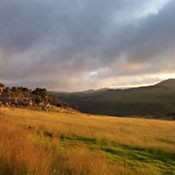Do we need Shared Governance to capture Shared Value?
As farmers look to meet TMDL goals and pursue other ecoservice values, both bottom-up and top-down approaches have been attempted. Which approach should we look to in the future to capture these ecoservice values? Join the discussion on Ecosystem Commons.

As farmers look to meet TMDL goals and pursue other ecoservice values, both bottom-up and top-down approaches have been attempted. Which approach should farmers look to in the future to capture these ecoservice values? Join the discussion on Ecosystem Commons.
6 October 2011 | The Ecosystem Commons is an online portal where members of the ecosystem services community can kick around ideas, showcase projects, and track trends.
Tim Gieseke launched this discussion about ecoservice values on the Ecosystem Commons on October 5. You can join it here.
The Discussion
As corporations, industries, governments and non-profits begin to define agricultural sustainability criteria, farmers often run into an entangled accounting system. In these top-down efforts, agencies rely on USDA’s and EPA’s program and practice-driven processes. However, too often non-profits see their efforts implode when sustainability is defined, and industry reaches the same plateau as Congress – the stalemate area between discussion and decision. Some food-processors that took Porter’s “shared value” approach are making progress, but still are not integrating government, industry and non-profit efforts.
A recent AgEQA (Agricultural Environmental Quality Assurance) project in Minnesota applied a shared governance model to assist farmers to provide “reasonable assurance” that they met TMDL goals. Stakeholders aligned their conservation efforts toward a common outcome, using land-based indices as the “market signal”. The intent was for the farmers to use these ecoservice portfolios to obtain value (regulatory assurance) from the State. With this bottom-up approach, the farmer could also pursue other ecoservice values from industry, corporations, non-profits, utilities and other governmental entities. These varied assets include monetary value, market access, participatory benefits, liability reduction and resource-credits.
The relative success of the AgEQA may be seeded in the somewhat crudely worded “Carlson’s Law” that states, “due to access to cheap tools, innovation that happens from the bottom up tends to be chaotic but smart. Innovation that happens from the top down tends to be orderly but dumb.”
To capture the ecoservice values, do we need to construct a bottom-up web approach rather than rely on the top-down linear model?
Author bio:
Through his consulting business, Ag Resource Strategies, Tim Gieseke develops environmental quality assurance programs for industry, government and non-profits involved in agriculture. He has centered his career around agriculture with experiences with conservation districts, federal farm policy, farming, and author of EcoCommerce 101: Adding an ecological dimension to the economy (www.ecocommerce101.com). He applied these ecocommerce concepts in his most recent work that included the EQA project (report at http://www.agresourcestrategies.com/LEQA.php) mentioned in the commentary. He is currently working with the Solutions From the Land Dialogue to integrate ag, forestry and ecoservices. He received his M.S. Env. Sc. from MSU-Mankato (MN). He, his wife and three boys are the fourth and the fifth generations on their Minnesota farm.
Additional resources
Please see our Reprint Guidelines for details on republishing our articles.

